I remember sitting with my daughter during her bedtime routine, completely blanking on the words to “Humpty Dumpty” after the first line. That embarrassing moment hit me hard – turns out I was part of that statistic from The Old Station Nursery showing that 1 in 4 adults can’t recall any nursery rhyme completely.
But here’s what really got my attention: kids who know just 8 nursery stories by age 4 are way better readers by third grade. Eight! That’s totally doable. That’s when I became obsessed with finding the best stories for bedtime and figured out which ones actually make a difference.
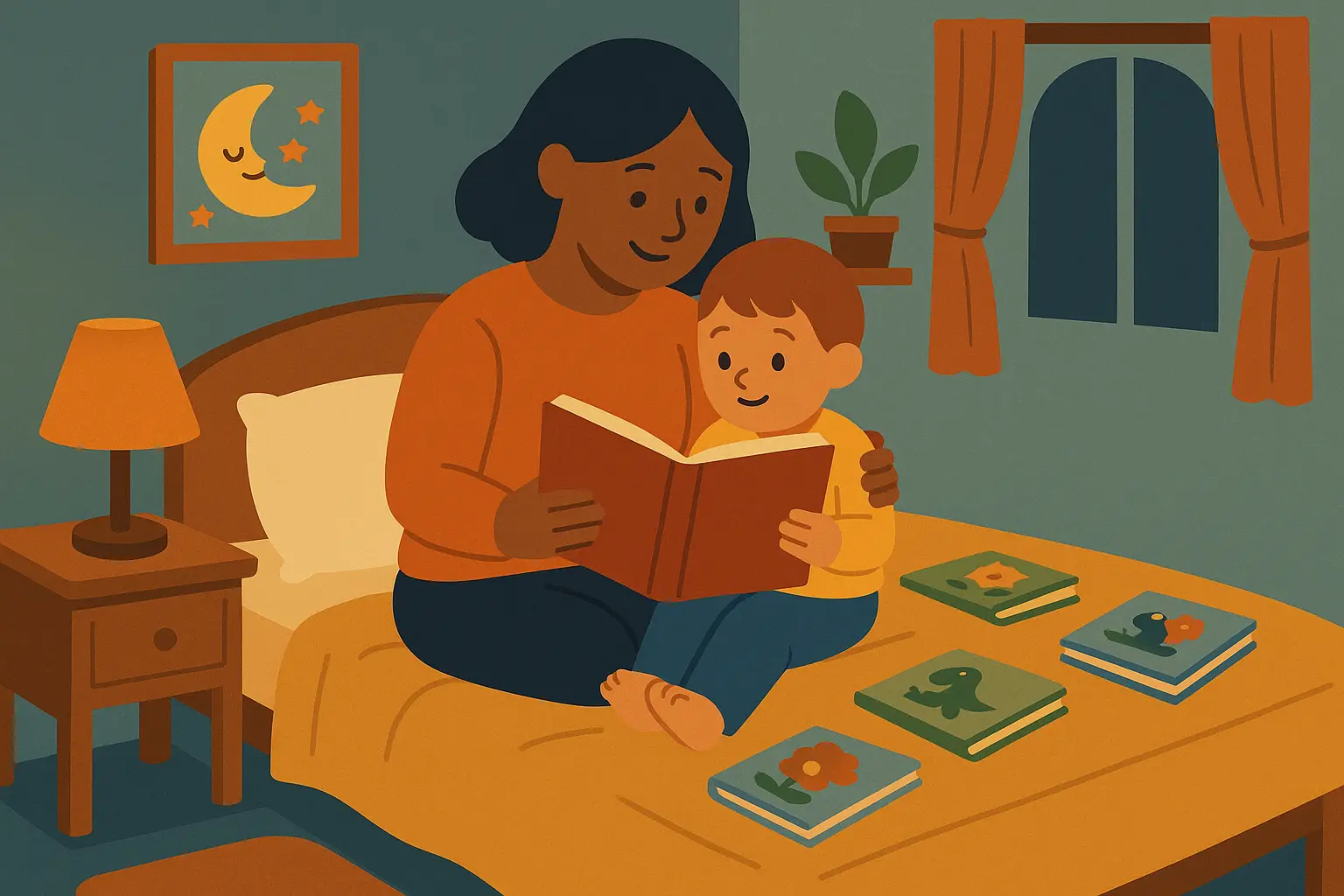
Table of Contents
-
What Actually Matters When Picking Stories
-
The 25 Stories That Actually Work (Organized by Type)
-
Classic Fairy Tales That Teach Life Lessons
-
Animal Stories That Make Learning Fun
-
Bedtime Stories That Actually Work
-
Educational Stories That Don’t Feel Like School
-
Interactive Stories That Get Kids Moving
-
Diverse Stories That Show Different Families
-
-
Why These Stories Work So Well
-
How to Pick the Right Stories for Your Kid
-
Making Your Own Stories When You Run Out of Steam
TL;DR
-
Pick stories that match where your kid is right now – not too easy, not too hard, and definitely not too long for their attention span
-
The best stories teach stuff naturally without feeling like lessons (kids are smart and they know when you’re trying to educate them)
-
Stories help kids learn words, sounds, and how stories work, which makes reading easier later
-
Your collection needs different types of kids and families so every child can see themselves in books
-
Stories with repetition and interaction keep kids engaged and help them remember better
-
Classic fairy tales teach big life lessons about being kind and working hard
-
Animal stories make learning numbers and letters actually fun
-
Good bedtime stories calm kids down and make bedtime easier (for everyone)
-
Educational stories sneak learning into entertaining plots
-
Interactive books turn reading time into playtime
What Actually Matters When Picking Stories
Let me be honest – I used to think any book was fine until I watched my neighbor’s 3-year-old recite entire stories from memory while my kid was still struggling with simple picture books. Turns out, picking stories isn’t just about grabbing whatever looks cute at Target.
Here’s what I’ve learned the hard way about choosing stories that actually help kids learn and grow.
Matching Stories to Your Kid’s Age and Attention Span
Your 18-month-old will lose interest after about 3 minutes, no matter how amazing the book is. Don’t take it personally! By age 4, they can sit through longer stories, especially if there’s a good plot twist or silly characters.
I used to get frustrated when my toddler wouldn’t sit still for longer books. Then I realized I was picking stories meant for older kids. Once I matched the book length to his actual attention span, story time became way more enjoyable for both of us.
Here’s what actually works at different ages:
|
Age |
How Long They’ll Listen |
Story Length |
What Keeps Them Interested |
|---|---|---|---|
|
12-18 months |
2-3 minutes max |
Super short, 5-10 pages |
Big, colorful pictures and simple sounds |
|
18-24 months |
3-5 minutes |
10-15 pages |
Animals, familiar things like cars or food |
|
2-3 years |
5-8 minutes |
15-20 pages |
Simple plots they can follow, repeated phrases |
|
3-4 years |
8-12 minutes |
20-30 pages |
Characters with feelings, problems to solve |
|
4-5 years |
12-15 minutes |
30+ pages |
Complex stories, multiple characters, bigger ideas |
Stories That Teach Without Feeling Like School
Kids are smart – they know when you’re trying to teach them something. The best stories sneak the learning in so well that kids don’t even notice. They’re just having fun following characters they care about.
Take “The Little Red Hen” – nobody sits down and explains work ethic to a 4-year-old. But when the hen does all the work making bread and the other animals just want to eat it without helping? Kids totally get why she doesn’t share. No lecture needed.
The magic happens when kids connect with characters and feel what they’re feeling. That’s when the real learning sticks.
Building Language Skills the Fun Way
You know how kids love to repeat the same phrases from their favorite books? That’s not annoying – it’s actually helping their brains learn how language works. All that repetition builds vocabulary and helps them understand how stories are put together.
Rhyming books are especially great because they help kids hear individual sounds in words, which makes learning to read so much easier later. Plus, rhythmic stories are just more fun to read out loud (trust me, you’ll be reading these a lot).
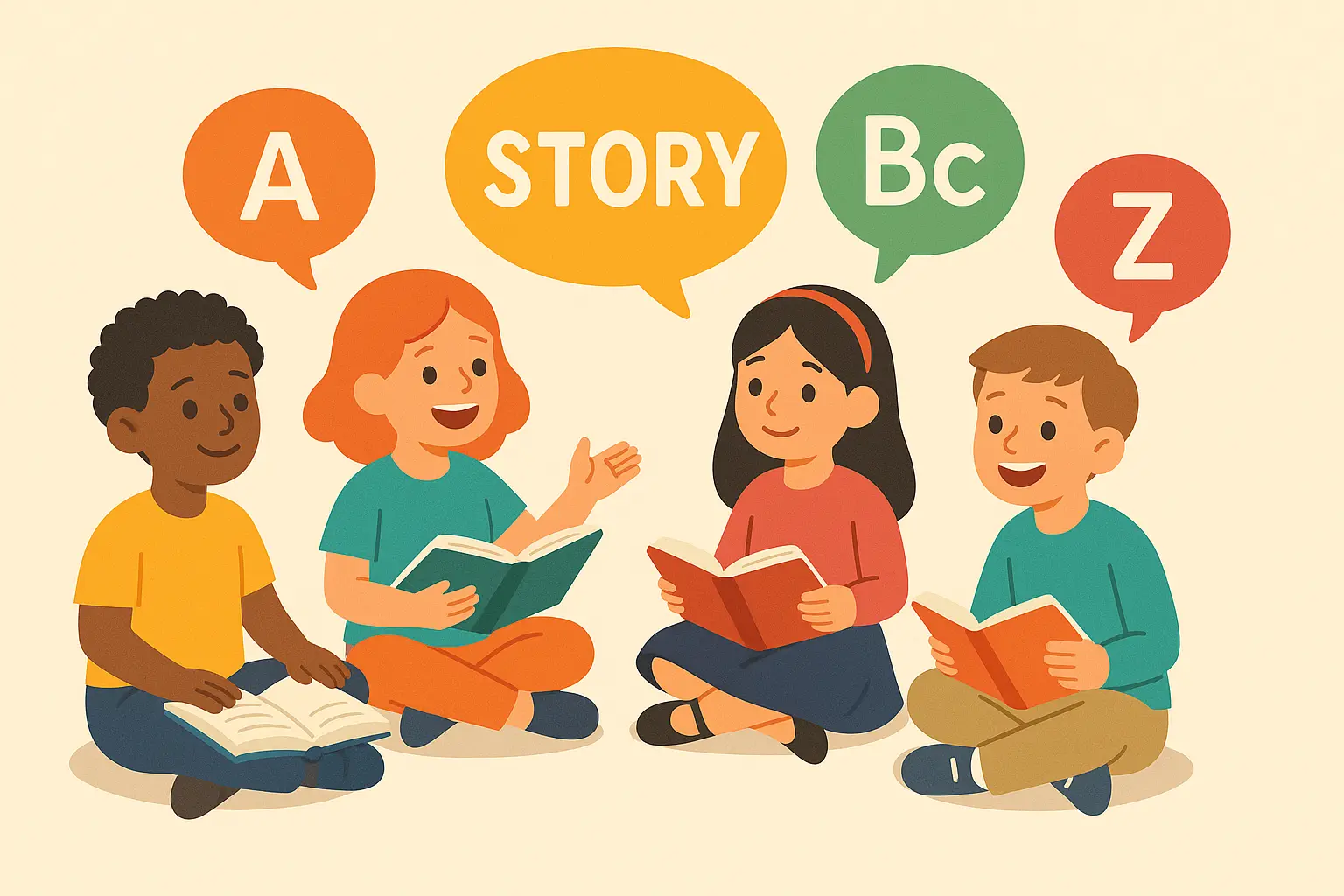
The 25 Stories That Actually Work (Organized by Type)
After reading approximately 847 children’s books (okay, maybe not that many, but it feels like it), I’ve figured out which stories actually deliver on their promises. These aren’t just books that look pretty on Instagram – they’re the ones that kids ask for over and over, and that actually help them learn and grow.
Classic Fairy Tales That Teach Life Lessons
These stories have been around forever because they work. They deal with the big stuff – being kind, working hard, making good choices – in ways that make sense to little kids.
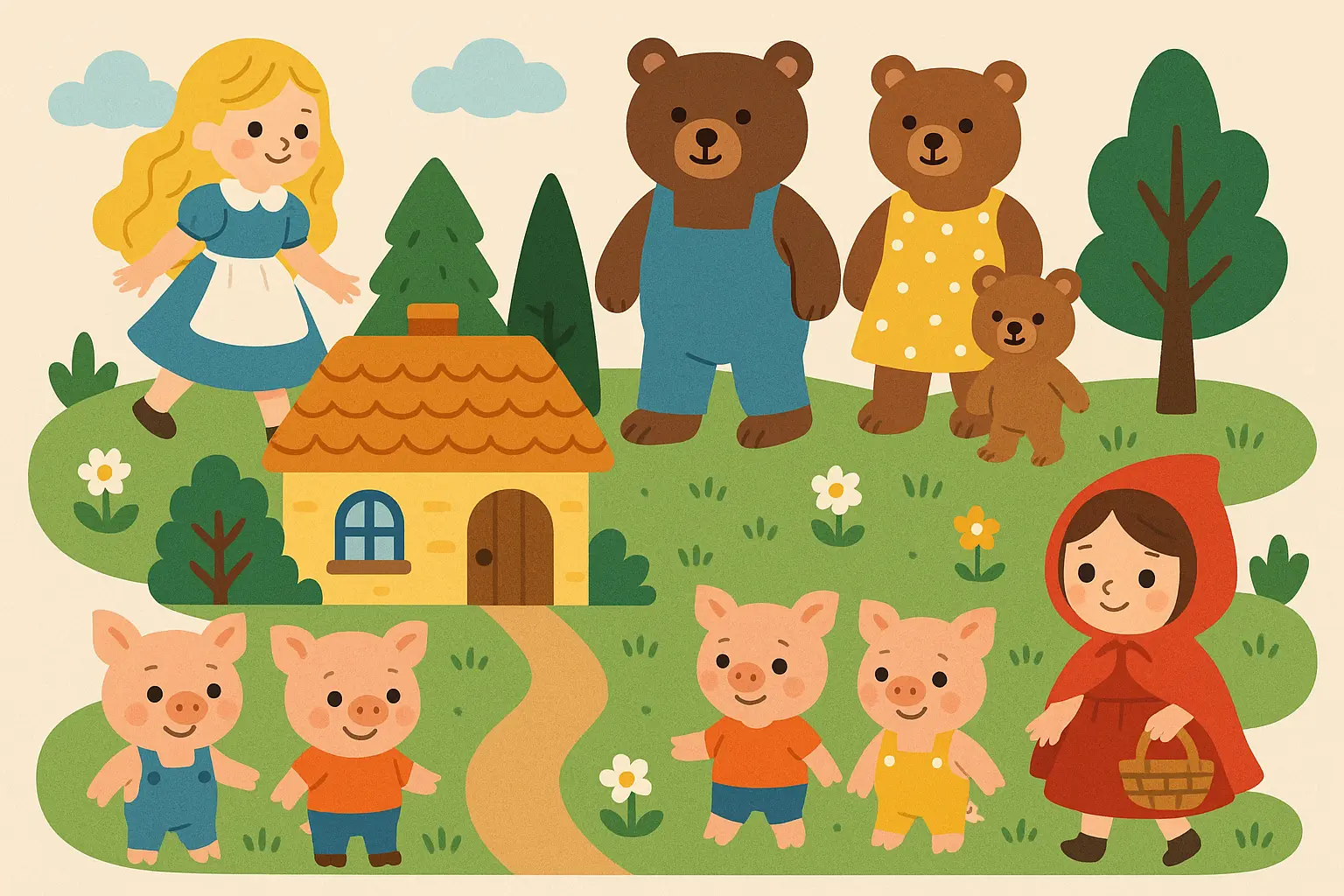
Understanding why these old stories still matter can help parents see why folktale story examples continue to teach important lessons to kids today.
1. Goldilocks and the Three Bears
Fair warning – after reading this a million times, you’ll find yourself saying “just right” about everything from your coffee temperature to parking spots.
But here’s why it works: Goldilocks teaches kids about respecting other people’s stuff and the concept of “just right” in a way they can understand. The repetitive structure (trying three different porridges, chairs, beds) keeps kids engaged while sneaking in size comparison lessons.
2. The Three Little Pigs
This one’s brilliant for teaching kids that doing things the right way (even if it’s harder) pays off in the end. The repetitive “I’ll huff and I’ll puff” part is pure gold – kids love saying it along with you.
Plus, it shows the value of hard work and planning ahead without being preachy about it. Kids just naturally understand why the brick house worked when the straw one didn’t.
3. Little Red Riding Hood (Modern Version)
Stick with the newer versions that focus on safety awareness rather than the scary wolf stuff. These teach kids to trust their instincts and be careful with strangers without giving them nightmares.
It’s actually a great conversation starter about safety rules and why we have them.
4. Cinderella
Modern versions focus on Cinderella’s kindness and positive attitude rather than just the makeover stuff. Kids learn that being nice to others matters more than how you look.
The resilience angle is huge too – Cinderella stays hopeful even when things are tough, which is a pretty important life skill.
5. Jack and the Beanstalk
This one’s all about creative problem-solving and being brave when you need to be. Kids love following Jack’s adventure and seeing how he thinks his way out of trouble.
It also shows that sometimes taking a risk (like trading the cow for magic beans) can lead to good things, which helps kids understand that trying new things isn’t always scary.
Animal Stories That Make Learning Fun
Kids naturally love animal characters, which makes these perfect for sneaking in educational content. They’re learning, but it feels like fun.
6. The Very Hungry Caterpillar by Eric Carle
This one’s genius because it teaches counting, days of the week, healthy eating, AND the life cycle of butterflies all in one story. Plus, the holes in the pages keep little fingers busy.
The transformation theme helps kids understand that growing and changing is normal and exciting, which is especially helpful during big transitions.
7. Brown Bear, Brown Bear, What Do You See? by Bill Martin Jr.
The predictable pattern makes kids feel like successful readers really quickly. Once they know the rhythm, they can “read” along with you, which builds confidence.
It’s also great for learning colors and animals without feeling like a vocabulary lesson.
8. The Tale of Peter Rabbit by Beatrix Potter
Peter learns the hard way that rules exist for good reasons, but the story doesn’t make him (or your kid) feel terrible about making mistakes. His mom still loves him even though he disobeyed.
It’s perfect for teaching about consequences while showing that family love doesn’t disappear when you mess up.
9. Corduroy by Don Freeman
This one hits right in the feelings. Corduroy wants to belong somewhere, and when he finds his person, it’s just perfect. Kids learn that everyone deserves love and that small imperfections (like a missing button) don’t make you less worthy of it.
It’s especially great for kids who feel different or left out.
10. Curious George series by H.A. Rey
George gets into trouble because he’s curious, but the stories celebrate that curiosity instead of punishing it. Kids learn that asking questions and exploring is good, even if it sometimes leads to messes.
The problem-solving in each adventure shows kids that there’s usually a way to fix things when they go wrong.
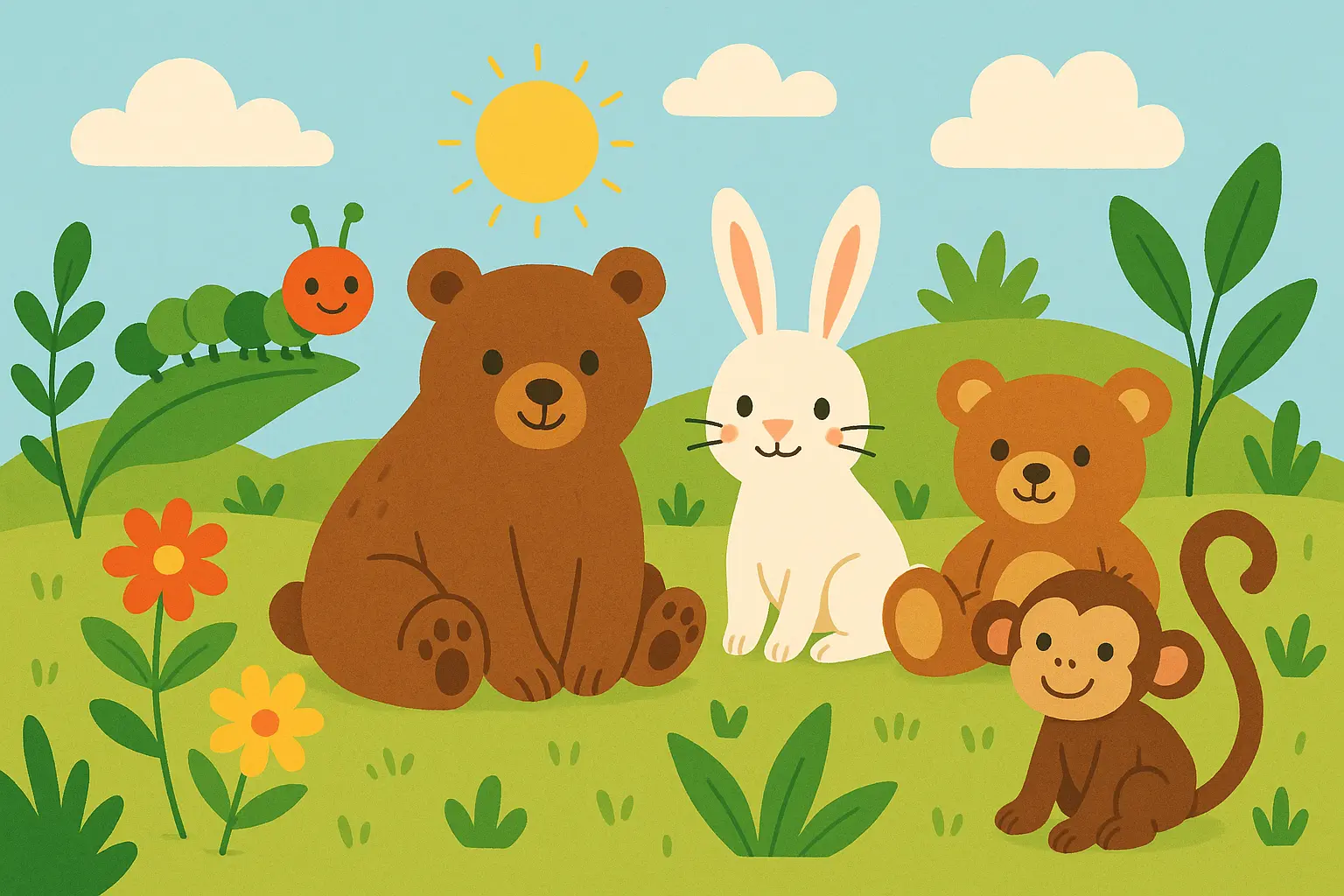
Bedtime Stories That Actually Work
These are the books that actually help kids wind down instead of getting them all riled up. Some work like magic to create that sleepy atmosphere.
If you need more options beyond these classics, checking out bedtime stories that actually work can give you even more tools for peaceful nights.
11. Goodnight Moon by Margaret Wise Brown
I used to think this book was boring until I realized it actually works like magic to calm kids down. The repetitive “goodnight” to everything in the room, plus the gradually darkening pictures, genuinely helps kids settle down for sleep.
Pro tip: Let your kid say goodnight to things in their own room after reading this.
12. Where the Wild Things Are by Maurice Sendak
This one helps kids process big emotions. Max gets angry, goes on a wild adventure in his imagination, then comes home to find his dinner still warm. It shows that it’s okay to have big feelings, but family love is always there waiting.
Some kids find it a little intense, so if yours gets scared, try again in a few months.
13. The Kissing Hand by Audrey Penn
Perfect for kids dealing with separation anxiety. The mom raccoon puts a kiss in her baby’s hand so he can feel her love even when she’s not there. It gives kids (and parents) a concrete way to handle being apart.
Try giving your own kid a “kissing hand” before leaving them at daycare or with a babysitter.
14. Llama Llama Red Pajama by Anna Dewdney
This one validates those bedtime fears that every kid has. Llama Llama gets scared when his mama doesn’t come right away, but he learns to calm himself down. It shows kids that bedtime anxiety is normal and gives them coping strategies.
The rhyming makes it fun to read, even when you’re tired.
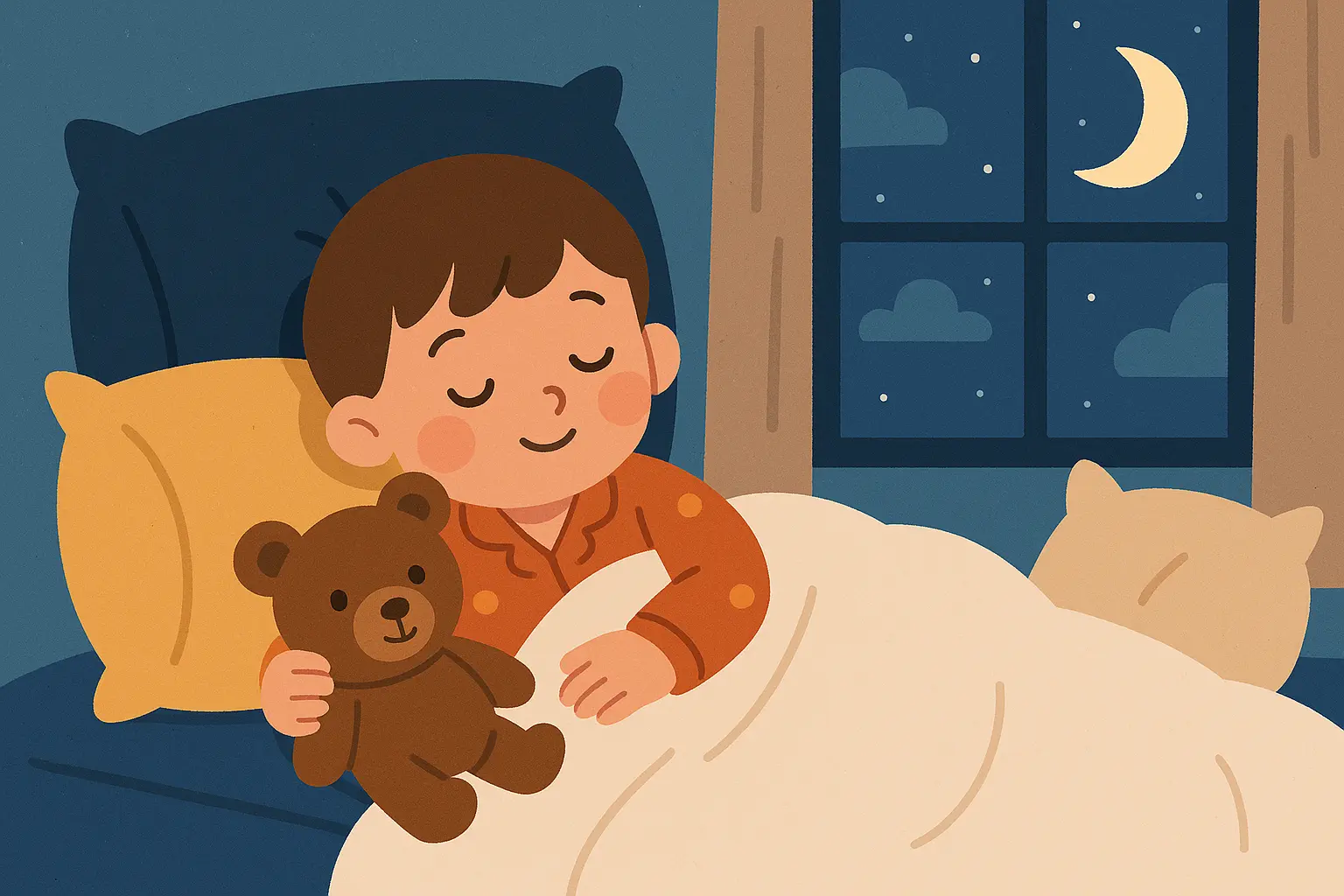
Educational Stories That Don’t Feel Like School
These books teach letters, numbers, and concepts in ways that are actually entertaining. Kids learn without realizing they’re learning.
15. Chicka Chicka Boom Boom by Bill Martin Jr.
Fair warning: this song will get stuck in your head for days. But it makes learning the alphabet absolutely irresistible. The rhythm and the silly scenario of letters climbing a coconut tree keeps kids engaged while they absorb the letter sequence.
Your kid will be chanting “A told B, and B told C” in no time.
16. The Rainbow Fish by Marcus Pfister
The shimmery scales are gorgeous, but the real magic is in the lesson about sharing. Rainbow Fish learns that giving away his beautiful scales to make friends brings him more happiness than keeping them all to himself.
It’s a gentle way to talk about generosity and friendship.
17. If You Give a Mouse a Cookie by Laura Numeroff
This one teaches cause and effect in the most entertaining way possible. Each thing the mouse wants leads logically to the next request, and kids love trying to predict what will happen next.
It also shows how one small action can lead to a whole chain of events, which is a pretty sophisticated concept presented in a fun way.
18. The Giving Tree by Shel Silverstein
This one’s complex – it raises questions about healthy relationships and the balance between giving and receiving. You might find yourself having deeper conversations about love and sacrifice after reading it.
Some parents love it, others find it problematic. Read it yourself first and decide if it fits your family’s values.
Interactive Stories That Get Kids Moving
These books turn story time into playtime. Instead of just listening, kids get to participate, make decisions, and see immediate results from their actions.
19. Don’t Let the Pigeon Drive the Bus! by Mo Willems
Kids get to be the authority figure here, telling the pigeon “NO!” over and over. It’s empowering for them and teaches about safety rules in a way that’s actually fun.
The pigeon’s arguments are hilarious, and kids love being the ones who get to enforce the rules for once.
20. Press Here by Hervé Tullet
This book is pure magic. Kids press dots, shake the book, tilt it, and actually see things change on the next page. It teaches cause and effect immediately and makes reading feel interactive and responsive.
It proves that books can be just as engaging as tablets or phones.
21. The Book With No Pictures by B.J. Novak
You’ll feel silly reading this at first, but kids absolutely love it. The book forces adults to say ridiculous words and sounds, which creates tons of laughter and connection.
It shows kids that words themselves can be funny and entertaining, even without pictures.
22. We’re Going on a Bear Hunt by Michael Rosen
This participatory approach aligns with ideas found in interactive stories that transform reading by making kids active participants rather than just listeners.
Kids get to act out the whole adventure – splashing through rivers, swishing through grass, squelching through mud. The repetitive phrases make it easy to participate, and the adventure keeps everyone engaged.
It also teaches perseverance – the family keeps going despite obstacles, which is a great lesson about not giving up.
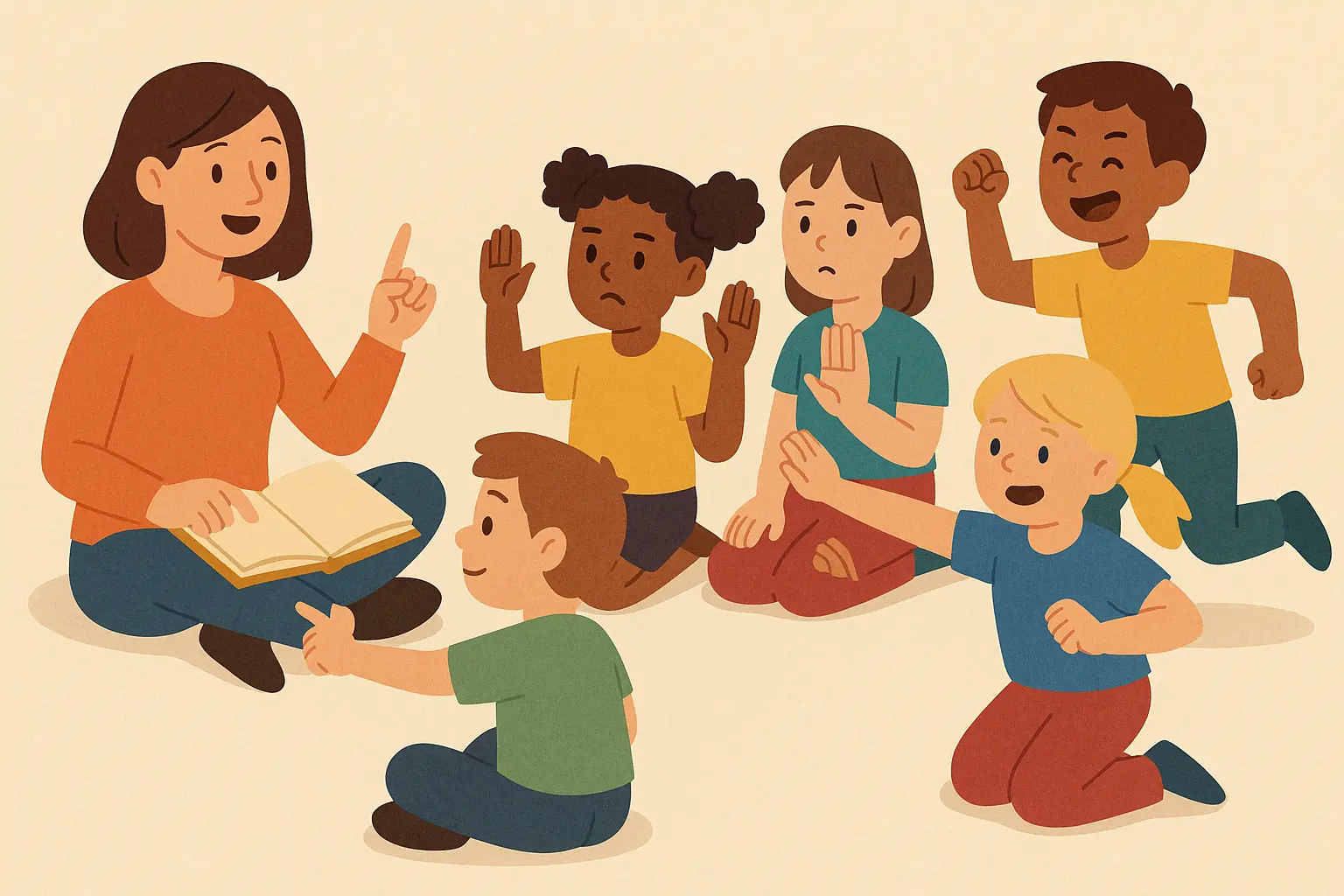
Diverse Stories That Show Different Families
These stories make sure all kids can see themselves in books while learning about different experiences. Every child deserves to find themselves reflected in the stories they hear.
23. Last Stop on Market Street by Matt de la Peña
This book celebrates city life and shows that beauty and wonder exist everywhere, not just in fancy places. CJ and his grandmother’s bus ride through their neighborhood shows kids that amazing things can be found in everyday experiences.
The relationship between CJ and his grandmother is especially sweet – she helps him see their world in a positive way.
24. The Name Jar by Yangsook Choi
Unhei considers changing her Korean name to fit in at her new American school, but her classmates help her realize that her name is beautiful and worth celebrating. It’s perfect for talking about cultural pride and acceptance.
Great for any kid who’s ever felt different or like they didn’t fit in.
25. Hair Love by Matthew A. Cherry
This one shows a dad learning to style his daughter’s natural hair for a special day, and it’s just beautiful. It celebrates father-daughter relationships while showing that Black hair is gorgeous and deserves care and attention.
The representation matters so much, and the love between the dad and daughter comes through on every page.
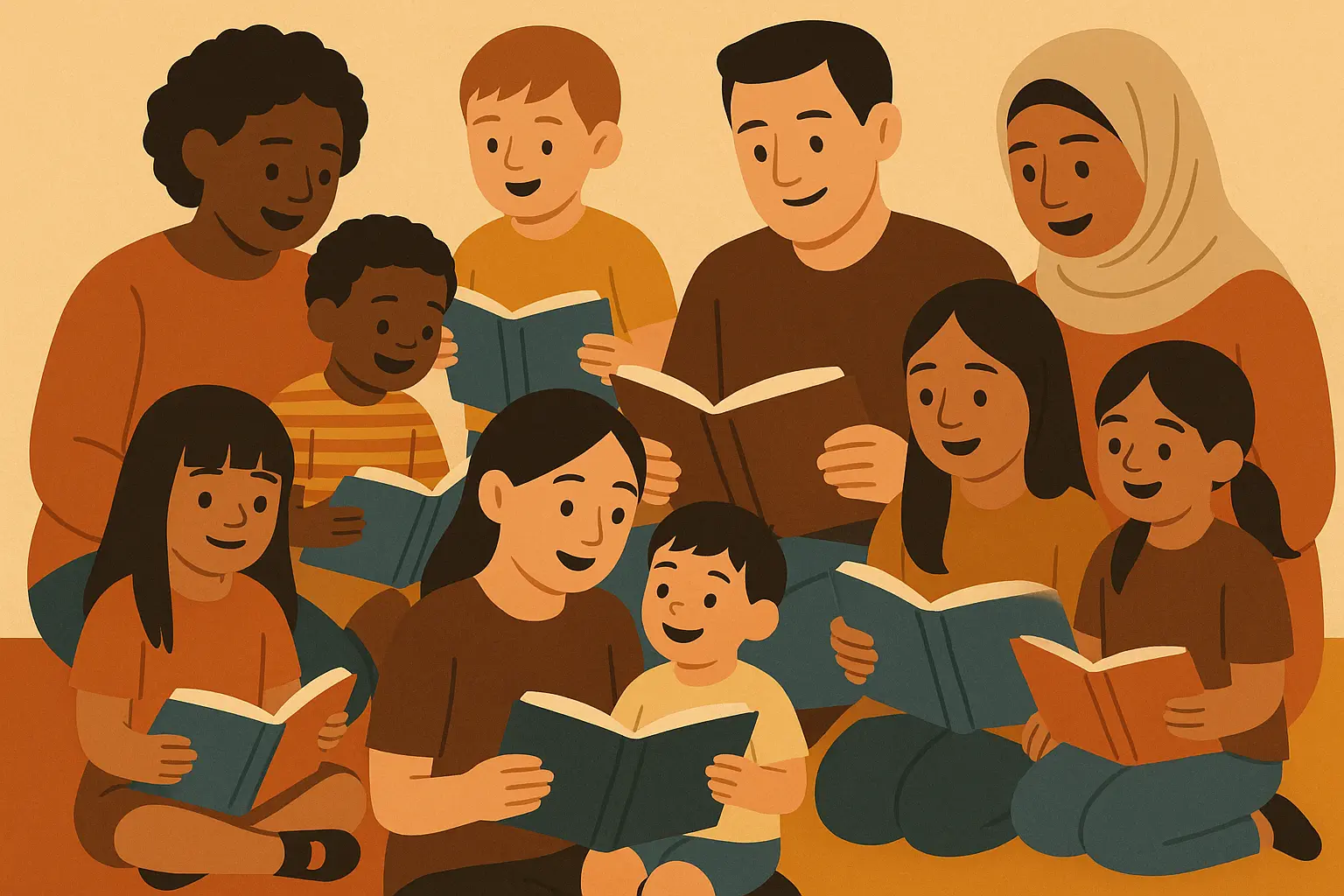
Why These Stories Work So Well
Look, I could give you a bunch of academic reasons why these books are great, but here’s what I’ve actually noticed: kids connect with them. They ask for them repeatedly, they remember the characters, and they start using ideas from the stories in their own play.
|
Story Type |
What They’re Really Good For |
Best Ages |
What Kids Actually Learn |
How Kids Feel |
|---|---|---|---|---|
|
Classic Fairy Tales |
Teaching right from wrong |
3-6 years |
Consequences matter, be kind |
Safe and secure |
|
Animal Adventures |
Making learning fun |
2-5 years |
Numbers, letters, friendship |
Happy and curious |
|
Bedtime Stories |
Actually helping kids sleep |
1-5 years |
How to calm down |
Peaceful and loved |
|
Educational Stories |
Sneaking in learning |
3-6 years |
Letters, numbers, problem-solving |
Smart and capable |
|
Interactive Stories |
Getting kids involved |
2-6 years |
Following directions, cause and effect |
Powerful and engaged |
|
Cultural Stories |
Showing different families |
3-6 years |
Everyone matters, differences are good |
Included and proud |
Why Classic Fairy Tales Still Matter
These old stories stick around because they deal with universal stuff that every kid faces – learning rules, being kind, working hard, dealing with fear. Goldilocks teaches respect for others’ property through a story about porridge and bears, which is way more effective than just telling kids “don’t touch other people’s stuff.”
The Three Little Pigs shows that doing things right the first time saves trouble later, but it does it through a story about building houses and a huffing, puffing wolf.
What Makes Animal Stories So Effective
Kids naturally love animals, so they pay attention when animal characters are teaching them things. The Very Hungry Caterpillar sneaks in lessons about numbers, days of the week, healthy eating, and life cycles all while following a cute caterpillar’s journey.
Brown Bear’s repetitive pattern makes kids feel like successful readers, which builds confidence for real reading later.
The Secret to Good Bedtime Stories
The best bedtime books create a calm atmosphere without being boring. Goodnight Moon’s repetitive structure and gradually darkening pictures actually help kids’ brains prepare for sleep.
Where the Wild Things Are lets kids process big emotions before bed, showing that even when feelings get wild, home and family love are always there.

How to Pick the Right Stories for Your Kid
Don’t stress about checking all the boxes or having the perfect collection. If your kid loves a book and asks for it repeatedly, you’re winning. Here’s what I’ve learned about matching stories to kids:
Start Where Your Kid Actually Is
Pick stories that match where your kid is right now – not too easy, not too hard. If they’re getting restless halfway through, the book might be too long or complex. If they seem bored, try something with more action or interaction.
I used to push longer books because I thought they were “better,” but my kid was way happier with shorter stories that held his attention completely.
Pay Attention to What They Love
Some kids are all about animals, others love vehicles, some want stories about families like theirs. Follow their interests – a kid who’s obsessed with trucks will sit still for any story featuring construction vehicles, even if it’s teaching them letters or numbers.
Mix Different Types
You don’t need every category represented every night, but having a good mix means you can match the story to the mood. Excited kid before bed? Try something calming. Cranky day? Maybe an interactive book that gets them moving and laughing.
Don’t feel guilty about rotating books in and out. If you’re sick of reading the same story for the 50th time, hide it for a while. Your kid will rediscover it later like it’s brand new.
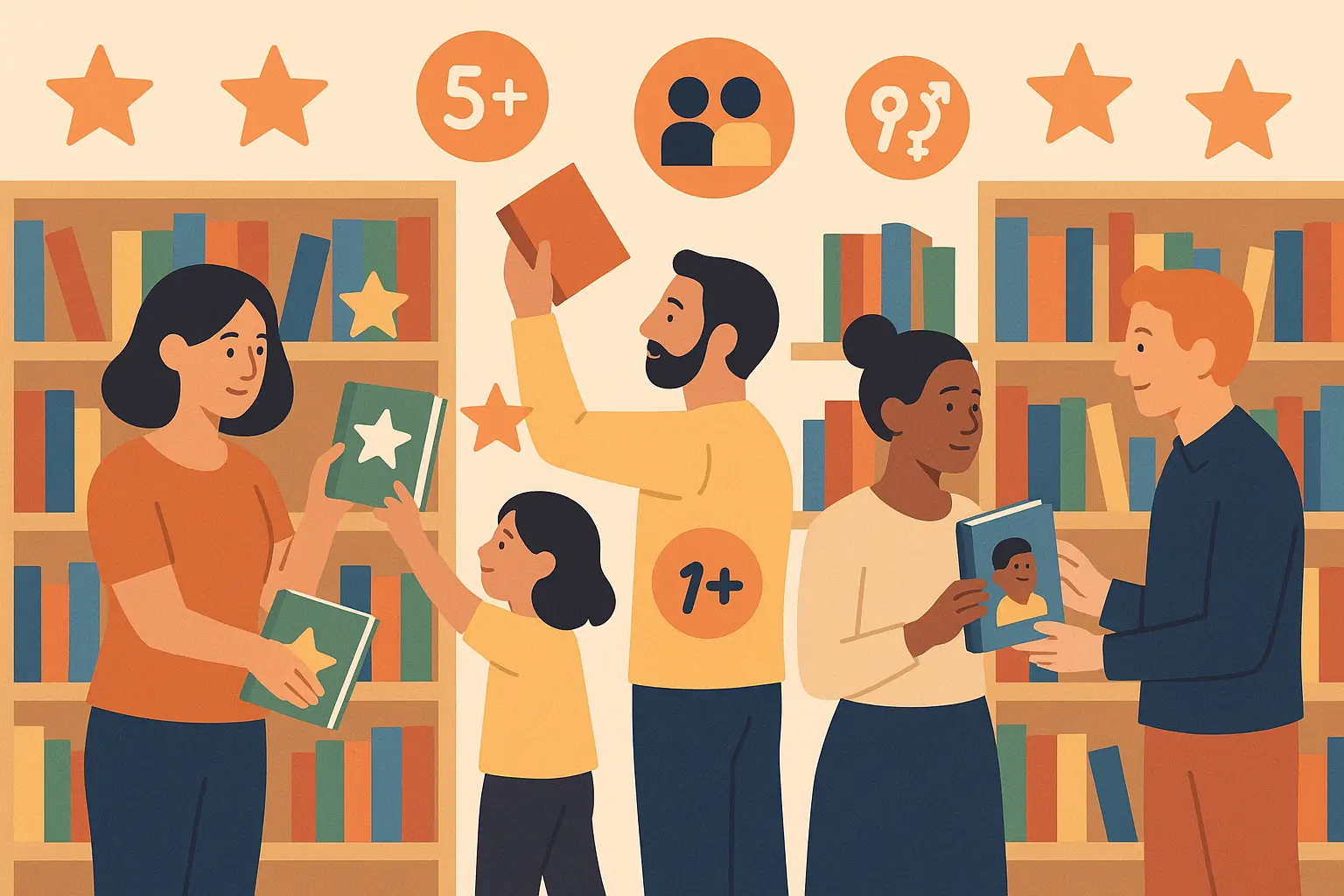
Making Your Own Stories When You Run Out of Steam
Sometimes you just run out of steam, you know? When you’ve read every book in the house twice and your kid wants “one more story,” having a backup plan helps. Whether that’s making something up on the spot or using one of those story generator tools, do whatever keeps bedtime peaceful.
When You Need Fresh Ideas Fast
Parents can explore story starters generators to create compelling opening lines that capture their child’s attention immediately, while kids story generators provide complete narrative frameworks for busy parents.
These tools are lifesavers when you’re exhausted but your kid wants just one more story. Input your child’s current obsession – whether it’s dinosaurs, construction vehicles, or their stuffed elephant – and get fresh story ideas that feel personalized.
Creating Stories That Look Like Your Family
One of the coolest things about making your own stories is creating characters that actually look like your family or deal with your specific situations. If your kid is nervous about starting preschool, you can create a story about a character who looks just like them having a great first day.
These personalized stories often work better than generic books because they address exactly what your child is experiencing.
Don’t Overthink It
You don’t need to be a professional writer to tell a good story. Kids just want characters they care about and something interesting happening. Start with “Once upon a time, there was a [your kid’s favorite animal] who loved [their favorite activity]” and see where it goes.
The technology doesn’t replace your creativity – it just gives you ideas when your brain is fried from a long day.
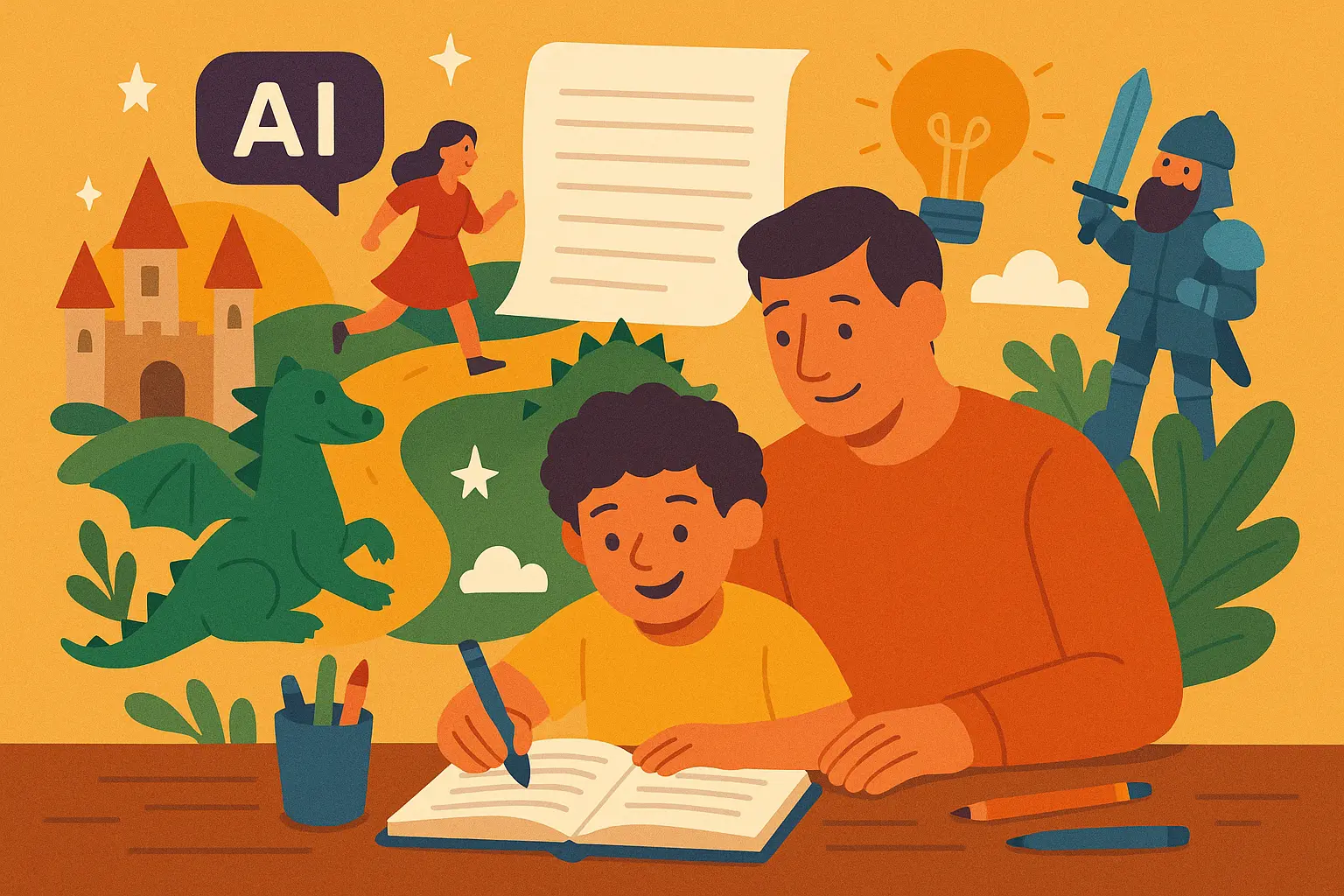
Final Thoughts
Look, you don’t need all 25 of these stories tomorrow. Start with a few that sound interesting, see what sticks, and build from there. Some will be hits, others will collect dust – and that’s completely normal.
Here’s something that blew my mind: kids who know 8 nursery rhymes by age 4 are way better readers by third grade. Eight! That’s totally doable, and it shows that the stories you read now really do make a difference later.
The real magic isn’t in having the perfect collection. It’s in those moments when your kid snuggles closer during the scary parts, or when they “read” their favorite book to their stuffed animals using the voices you always use.
Don’t feel guilty about skipping pages when you’re exhausted (we’ve all done it), or about reading the same book 47 nights in a row because it’s the only one that will get your kid to sleep. Some nights you’re just surviving bedtime, and that’s okay too.
You’re already doing great. These stories are just tools to make those bedtime moments a little easier and maybe help your kid fall in love with books along the way. Whether you’re reading classics from this list or making up stories about their pet goldfish saving the world, what matters is that you’re creating positive associations with stories and reading.
Your investment in story time today – even the nights when it feels like chaos – is building the foundation for your child’s future success in reading, learning, and understanding the world around them. These 25 stories are a great place to start, but the most important story is the one you’re writing together every night.



Add comment